If it has felt like you have been on an emotional and vibrational roller-coaster this 2012, there is a simple explanation. The “precession of the equinoxes” is a 26 thousand year astronomic cycle of the Earth.
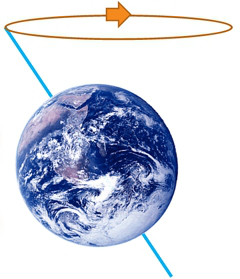 For 13 thousand years (one half) of this cycle there is a positive (light) polarization. The remaining 13 thousand year duration there is a negative (dark) polarization. The repetition of positive-negative cycling results in an “oscillation” (light-dark-light-dark).
For 13 thousand years (one half) of this cycle there is a positive (light) polarization. The remaining 13 thousand year duration there is a negative (dark) polarization. The repetition of positive-negative cycling results in an “oscillation” (light-dark-light-dark).
The Earth is now coming out of the negative (dark) portion of this oscillating cycle, and is approaching the positive (light) polarized portion of the oscillation.
There will be no cataclysm. There has been an ongoing dissemination of erroneous information regarding the nature of this phenomenon and the date December 21, 2012.
A good example is Edgar Cayce’s “pole shift” prediction (see below) given on August 11, 1936 (reading # 826-8).
“Question: What great change or the beginning of what change, if any, is to take place in the earth in the year 2,000 to 2,001 A.D.?”
“Answer: When there is a shifting of the poles; or a new cycle begins.”
Although his prediction was completely accurate, it’s literal meaning was misinterpreted and subsequently used in a campaign of misinformation.
The truth of the matter is that there is a “singularity” that will occur on December 21, 2012. (This is the “Zero-Point” discussed by the late Terence McKenna.)
Time is a “Binary Fractal” (not a linear/sequential-point straight line, as many people have been lead to conceptualize.) This time fractal is in the shape of a spiral which has a progressive oscillation. This spiral has a downward trajectory, and oscillates in a spiraling motion, circling faster and faster as it descends (just like one of those coin “Spiral Wishing Wells” (see video link) that you see at the supermarket.

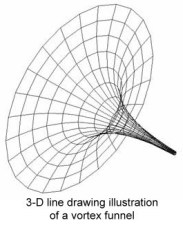
The technical aspects of the approaching singularity can be found on Wikipedia, here. The “Zero-Point” of singularity occurs when the binary oscillation (1/0) reaches the speed of equal duration. This will occur on December 21, 2012.
Many ancient cultures were aware this approaching date of singularity, and they understood the science of what was occurring completely. They wisely encoded their knowledge of this algorithm into their sacred buildings and calenders for later generations to discover, should the information disappear from “common knowledge.”
Examples of this indigenous wisdom can be found in the Mayan “Tzolkin” calender, the ancient Chinese divinatory system known as the “King-Wen sequence I-Ching”, and in the dimensionally encoded pathways of the Great Pyramid of Giza, in Egypt.
The phenomenon of singularity is somewhat counter-intuitive, as it is occurs on all levels of nature, from the infinite to the infinitely small. This multi-denominational aspect of Singularity accounts for the reason why many people can feel that “something” is going on…
The Quantum dimension is also affected by Singularity. This Quantum level is not located within “Space-Time”, however it is very real and is actually the dimension which allows for our own physical existence. It is the dimension of all things “Etheric” (spiritual). This is the reason why we feel the roller-coaster effects of singularity on ALL levels.
As we head into a new age as a collective, we can choose to celebrate our successful navigation through the last 13 thousand years of dark-oscillation and look forward to an AMAZING age to come!
You are recognized with gratitude! Namaste!
December 6, 2012 | Categories: Uncategorized | Tags: 2012, nonfiction, precession of the equinoxes, sacred knowledge, Spiritual | Leave a comment
They almost look as if they are posing for a portrait …Wouldn’t you agree?

“Mr. DeMille, I’m ready for my close-up!”
June 24, 2010 | Categories: Uncategorized | Tags: 2012, Paranormal, QUETZAL, Spiritual | 1 Comment
This slideshow requires JavaScript.
(more…)
June 14, 2010 | Categories: Uncategorized | Tags: 2012, Ocelot, Paranormal, QUETZAL, Quetzalcoatl, Spiritual | Leave a comment

The image in the middle of the page is Hopi Native American in origin. The exact meaning of the image is not completely understood. The image is believed to represent a literal method or means by which the ancestral Hopi culture induced altered states of consciousness. Achieving an altered state of consciousness was necessary for practicing specific shamanic religious-rites and rituals.
It is understood that psychoactive ethenogenic substances were used by the ancestral Hopi’s spiritual leaders to induce altered states of consciousness however, it is the anthropomorphic entity depicted in the image which is the less understood aspect of the sacred rituals. The entity depicted was as integral to these ceremonies as entheogenic substances (hallucinogens) which were the physiological catalyst used to cause the “altered” state of consciousness.
Although the image is understood to represent an essential aspect of the ceremonies and the process which ensues for the individual undertaking the sacred rights, somehow it’s exact meaning has been lost in Hopi antiquity. Similar images have been found in different locations directly connected to Hopi sacred rites so it is known that the image is important in its ceremonial significance. It is already known that there are Quetzal and Hopi connections due to well documented archeological evidence. Quetzals were traded from Maya territory in the south, northward toward the Native American territories and were commonly found in northern burial sites.
My own hypothesis is that there are additional connections shared by the Ancient Hopi and Meso-Americans which are currently unknown by the experts in mainstream archeology. The connections I have noted above which I believe link the Hopi’s unnamed sacred entity and the Mayan’s sacred resplendent Quetzals may be further evidence to support the plausibility of this likelihood.
June 13, 2010 | Categories: Uncategorized | Tags: 2012, Paranormal, QUETZAL, Spiritual | Leave a comment

June 13, 2010 | Categories: Uncategorized | Tags: 2012, Paranormal, QUETZAL, Spiritual | Leave a comment
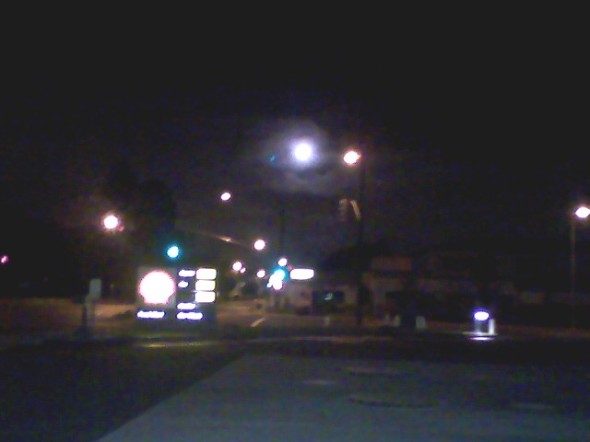
Photo of UFO taken in El Sobrante, California at Shell Gasoline Station
June 11, 2010 | Categories: Uncategorized | Tags: 2012, Paranormal, QUETZAL, Spiritual, UFO | 2 Comments

Notice the “Eye of Horus?”
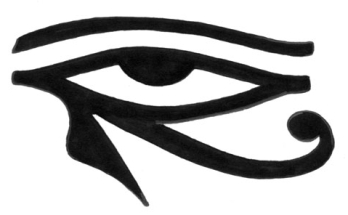
Eye of Horus
The Quetzal photo above is the one which originally peaked my interest in the Resplendent Quetzal (and the inexplicable wave of supernatural phenomenon which accompany these birds.)
I began looking at pictures of Quetzals as a subject matter for my artwork. I like to pick random subjects, which I then practice drawing. I ultimately create a portfolio of artwork using various mediums concerning the random subject, (kind of like a project in lateral thinking on alternative subject matters.)
This Quetzal Photo specifically, has a few unusual manifestations in it. The easiest way for me to discuss each of these phenomenon is by individually pointing out the various connections which apparently link the phenomenon with specific background information I know regarding historic information and the religious doctrines of the Meso-Americans and the ancient Egyptians.
Some of the connections that stand out to me in this photo are listed below.
1. Notice the “Eye of Horus” in the above Quetzal photo? (It is blue in color, and is behind the Quetzal, toward the top left corner…)
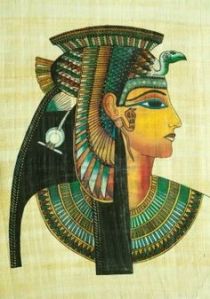 As early as 3,000 BC, the Egyptians often portrayed their Goddess of the Pharaohs Isis in art and sculpture as serpents with wings or feathers. Isis’ son Horus was often represented with winged arms and accompanied by serpents.
As early as 3,000 BC, the Egyptians often portrayed their Goddess of the Pharaohs Isis in art and sculpture as serpents with wings or feathers. Isis’ son Horus was often represented with winged arms and accompanied by serpents.
The Meso-American Feathered Serpent signified the duality of human existence. The Feathered Serpent is in touch with both worlds at once: The Earth bound snake and the liberation of the heavens, as signified by the feathers.
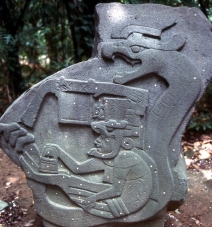 The Ancient Meso-Americans such as the Olmecs, the later inhabitants such as the Mayans, and the post classic Aztec people had similar beliefs in the feathered Serpent, which Mayans called Kulkulkan and the Aztecs called Quetzalcoatl. The earliest iconographic depiction of this deity is believed to be found on Stela 19 at the Olmec site of La Venta, located in the present-day Mexican state of Tabasco. This stela depicts a serpent rising up behind a person holding an Olmec version of an Ankh, who is probably engaged in a shamanic ritual.
The Ancient Meso-Americans such as the Olmecs, the later inhabitants such as the Mayans, and the post classic Aztec people had similar beliefs in the feathered Serpent, which Mayans called Kulkulkan and the Aztecs called Quetzalcoatl. The earliest iconographic depiction of this deity is believed to be found on Stela 19 at the Olmec site of La Venta, located in the present-day Mexican state of Tabasco. This stela depicts a serpent rising up behind a person holding an Olmec version of an Ankh, who is probably engaged in a shamanic ritual.
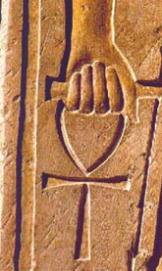 Interestingly the Ankh, or Key of Life is another aspect that connects the two cultures, as the Egyptian ankh is an important symbolic icon for that ancient civilization as well.
Interestingly the Ankh, or Key of Life is another aspect that connects the two cultures, as the Egyptian ankh is an important symbolic icon for that ancient civilization as well.
The Meso-American civilizations worshiped the Feathered Serpent from about 1,400 BCE until 1531, which was when the Aztecs were invaded by the Christian Spaniards.
2. There is an appearance of mirrored images in the Quetzal photo.
On the right hand side of the bird directly above the branch there appears to be an eyeball being held in the grip of some type of black claw (which I believe may belong to “The Paddler” who is listed in the Mayan sacred “Dresden Codex”.)
The eyeball appears to be looking toward the left side of the photo. Directly in front of the eyeball there appears another identical mirrored reflection of the same eyeball, staring back at the original eyeball. (This polarized reflection phenomenon is one that I see frequently in the Quetzal photos.) This mirror image phenomenon is reminiscent of the Hero twins, Quetzalcoatl’s dark twin brother, Tezcatlipoca (aka Smoky-Mirror…)

Hero twins playing a ballgame in a roll-out vessel image
May 18, 2010 | Categories: Uncategorized | Tags: 2012, Paranormal, QUETZAL, Spiritual | Leave a comment
Devils Advocate- One who argues against a cause or position, not as a committed opponent but simply for the sake of argument or to determine the validity of the cause or position.
Being an analytical person I have searched for and carefully considered the scientific explanations which might explain why I see strange things in photographs.
Cognitive Psychology is defined as the science of brain function, which includes the mental process of perception. Presumably various disruptions in these processes offer the most widely accepted scientific explanations for the “misinterpretations” that people experience in regards to visual recognition.
Apophenia is the natural tendency for the human mind to interpret sensory input, (what is perceived visually, audibly or tacitly) as something familiar or more easily understood and accepted, in effect mentally filling in the blanks.
Pareidolia- The visual version of apophenia, seeing patterns in random data.The imagined perception of a pattern or meaning where it does not actually exist.
Anthropomorphizing is when we attribute human form or personality to things non-human.
Matrixing is another word used to describe Apophenia, Pareidolia and Anthropomorphizing and is commonly used by ghost hunters and paranormal skeptics.
“Common examples of pareidolia include seeing people or religious symbols in clouds, or maybe hearing hidden messages on audio recordings played in reverse. This is not to say these images and sounds are not there, but one must consider, “What is their significance?”
(In consideration of the aforementioned statement, I will start my rebuttal against the argument that these scientific phenomenon are adequate explanation for the sightings in question.)
There is no significance. This fact is evidence that Cognitive Psychology is an inadequate explanation for the sightings. The images I see are not in any way related to interests that I have ever had or of subjects that I had any special knowledge of.
Literally, one day (a little-over a year ago, in 2009), I began to see unusual manifestations in photographs, video, and in the first-person.These manifestations have continued to be obvious to me ever since. So, there is no significance.
I do see faces, eyes and things of that nature, which are common symptoms of anthropomorphic recognition patterns. However, I also see things that are totally alien in appearance to me.
I don’t see these “alien” things just once or twice, but on a reoccurring basis. I might see the same (or similar looking) things in completely different photographs. Theses photos may, or may-not-have the same subject matter.
When I see faces which are realistic in their appearance, but are often characterized by strange features, the argument that my brain is “attempting to arrange objects into a manner that is recognizable to it…”, just doesn’t seem to make sense.
If my brain is attempting to reconcile information input into recognizable patterns, wouldn’t I be seeing something that looked like it was at least human?
“…anthropomorphizing is when we attribute human form or personality to things not human. Seeing the face of Jesus on the toasted surface of a grilled-cheese sandwich is my favorite example…”
” Both anthropomorphizing and pareidolia can be defined as being forms of apophenia.”
” Apophenia is simply the experience of seeing patterns or connections in random or meaningless data, or the perception of connections and meaningfulness of unrelated phenomena.”
I attempt to classify the imagined from the “supernatural” by using an extensive series of “filters” to negate any issue listed above. Hopefully, using these filters will prevent me from misidentifying things that are not valid anomalies in photographs.
The filters I use include (but are not limited to) the following:
The anomalous instances are characterized by distinct and obvious variance . A distortion in resolution, outlining parameters of objects, questionable changes of color, texture, and pixalization, odd dimensions in size or unnatural lines are a few of the things that I double and triple check to verify that there is an unexplainable anomaly.
Often when there is an anomalous manifestation in a photograph , a single aspect of a face (such as an eyeball), will be the most obvious to me, and will see it first and foremost. However, when I look closer, I can almost always see the other eyeball, in relation to the first, as well as the rest of the features, consistent with a complete face.
If I was just mistakenly interpreting something in a photograph as an eyeball, then theoretically I should not be able to look more carefully and find another corresponding eye, within correct anatomical proportions to the first, which has matching detail and the correct iris color, etc. right? This would apparently discount Matrixing as a plausible explanation for the anomalies.
This information however, seems lend credibility to a hypothesis that links one’s ability (or inability) to see the phenomenon, directly to how well a person can see. The anomalies that manifest in the photos may only visible to those who have the ability to vary their perception (via control of their physical eyesight) enough to include them in their perception.
For example, Does anyone remember those “Hidden Picture” Illusions that first came out when computer graphics editing first became accessible?
They featured a series of small image of a single type in the foreground, and another in the background, and an image was supposed to pop out at you from somewhere within the two sets of images? (They were often found in posters, calendars, the Sunday Comics section of the newspaper…) Those things really used to get my goat. I could never see the secret image, no matter how long or hard I looked. Well, I can tell you that I am pretty sure that If I were to see one of those things now, I wouldn’t have the least bit of a problem seeing that “hidden image”. (I’ll let you know as soon as I do though, just to be sure…)
I think that these perceptions may have grown within myself due to my growing skill as an artist. (That is where the term “An artists perception….” comes into play.) The artists capabilities to see subtle variation in light or definition of line. In fact that reminds me of something that Colin Wilson says in his book “The Occult, A History”** regarding the human species and the evolution of visual perception…Ah, here it is:
“As long ago as 1887, Max Muiller, the editor of sacred books of the east pointed out* that for all practical purposes our ancestors of two thousand years ago were almost colour blind, as most animals are today. ‘Xenophanes knew of three colours of the rainbow only purple, red, and yellow; that even Aristotle spoke of a tricoloured rainbow; and that Democritus knew of no more than four colours- black, white, red, and yellow. Homer apparently thought the sea the same colour as wine. There are no colour words in primitive Indo-European speech. We can understand why Aristotle’s pupil Alexander of Macedon spent his life conquering the world. It must have been a singularly dull world, with no distinction between the red of wine , the blue-green of the sea, the emerald-green of grass and deep-blue of the sky. But it is understandable, biologically speaking. Life was hard and violent, and the capacity to grasp subtle distinctions of thought or colour would have had no value for survival….”
He goes on to say, “But the capacity for us to enjoy subtle vibrations is an important part of our energy-outlets. A man who cannot read is going to have a very dull time as he recuperates in a hospital from a serious operation, whereas a man who loves reading may find the inactivity delightful. Boredom is a lack of the capacity for registering subtle vibrations. And the definition of a living organism is an organism capable to responding to energy vibrations. The vibrations constitute ‘meanings.’ and, “Evolution is simply the capacity to register meanings that are already there”.
* The science of thought, (New York, Scribner’s) Vol.I p.299
** The Occult, (Random House, New York) 1971, p.30-31
Well said, Mr Wilson. Any way… I’m just gonna pound the rest of this out, or I will probably never get it finished and put on “The Recondite Quetzal”…so here it goes:
I see faces (“faces” from here on out is interchangeable with”scenes”, “figures”, “eyes”, “objects”, etc.) that are defined by contrasting elements or colors, or by a fusion of elements within a perspective that contain objects with varying spacial distances within the area covered by the static view of the initial camera/ photo position. (Some things are big and some are small, some are close while some are far away…)
I see “scenes” that are static but dynamically active in the moment that the photo was taken. These are often inexplicably dependent on other elements with direct relation to the scene. For example without any chance of a double exposure, or without any coherence or direct result of contact to the original scene or intended subject of the photo, I will see a mother, pushing a baby within a stroller, and the baby is wearing a bonnet and holding a bottle. That is five elements within a scene that have to be arranged in a very specific order to be recognizable. This is a very different scenario than the typical “Two eyes, a nose and a mouth” explanation offered up by “matrixing”.
I often don’t see anything unusual until I look at photo in its computerized negative (like the original negatives in traditional photography.) I also use other effects and filters to see if anything becomes more apparent. I never actually alter the original photo, however.
I often catch what appears to be continuous “layers” of scenes or objects kind of like copies of itself (Magnetic cine-waves?) drawn throughout photos. This goes for photos taken by today’s digital cameras all the way back to cameras and photography that are circa the early 1900’s (for which I am the owner of the original negatives, as well.) Sometimes, even more odd, I see the same figure or faces in the same or different photos, and they are in different poses, etc. (Now that’s getting really weird if you ask me.) One thing I noticed about this phenomenon however, is that often “things are in things”, is the way I describe it. For example there will be a clearly evident monk in the outline of a robe that is being worn by a monk in a photo of Tibetan monks. Or to be a little bit more discerning one time I was looking at a photo of a pueblo mesa. I had not read the information on the page that went with the photo, nor had I even glanced at it. All of the sudden it became apparent to me in the photo that there was a human skeleton, wearing what appeared to be a cape of human skin, in the photo. As with just about any of the other photos in question I could turn the page, put it down, and comeback to it later and could still see it just as plainly as the first time. Any way, as I began to read the information describing the scene in the photo it began to make more sense, as it described the Pueblo Mesa as belonging to a group of American Indians that had been accused of performing rituals that involved cannibalism and human sacrifice. Now did the appearance of the skeleton with a human skin cape either confirm or deny their practice of said rituals? No, not for me at least…so imagine that this is a typical scenario for me and you can imagine my frustration with the whole thing, a lot of the time….Sometimes it is kind of funny though, like when you see cartoon hip hop dudes in the cover of a ghetto rap CD.
I guess the oddest thing about all of this stuff that argues against anthropomorphic recognition and the like is the fact that after I show whatever I see to someone else, usually they will see the exact same thing. That is not to say that people don’t see other things as well, sometimes they are even pointing things out to me…but for the things that I find to be glaringly obvious, often other people can see them no problem, too (once I point them out at least.)
May 16, 2010 | Categories: Uncategorized | Tags: 2012, Paranormal, QUETZAL, Spiritual | Leave a comment

May 9, 2010 | Categories: Uncategorized | Tags: 2012, Paranormal, QUETZAL, Spiritual | Leave a comment


 For 13 thousand years (one half) of this cycle there is a positive (light) polarization. The remaining 13 thousand year duration there is a negative (dark) polarization. The repetition of positive-negative cycling results in an “oscillation” (light-dark-light-dark).
For 13 thousand years (one half) of this cycle there is a positive (light) polarization. The remaining 13 thousand year duration there is a negative (dark) polarization. The repetition of positive-negative cycling results in an “oscillation” (light-dark-light-dark).
 As early as 3,000 BC, the Egyptians often portrayed their Goddess of the Pharaohs Isis in art and sculpture as serpents with wings or feathers. Isis’ son Horus was often represented with winged arms and accompanied by serpents.
As early as 3,000 BC, the Egyptians often portrayed their Goddess of the Pharaohs Isis in art and sculpture as serpents with wings or feathers. Isis’ son Horus was often represented with winged arms and accompanied by serpents. The Ancient Meso-Americans such as the Olmecs, the later inhabitants such as the Mayans, and the post classic Aztec people had similar beliefs in the feathered Serpent, which Mayans called Kulkulkan and the Aztecs called Quetzalcoatl. The earliest iconographic depiction of this deity is believed to be found on Stela 19 at the Olmec site of La Venta, located in the present-day Mexican state of Tabasco. This stela depicts a serpent rising up behind a person holding an Olmec version of an Ankh, who is probably engaged in a shamanic ritual.
The Ancient Meso-Americans such as the Olmecs, the later inhabitants such as the Mayans, and the post classic Aztec people had similar beliefs in the feathered Serpent, which Mayans called Kulkulkan and the Aztecs called Quetzalcoatl. The earliest iconographic depiction of this deity is believed to be found on Stela 19 at the Olmec site of La Venta, located in the present-day Mexican state of Tabasco. This stela depicts a serpent rising up behind a person holding an Olmec version of an Ankh, who is probably engaged in a shamanic ritual. Interestingly the Ankh, or Key of Life is another aspect that connects the two cultures, as the Egyptian ankh is an important symbolic icon for that ancient civilization as well.
Interestingly the Ankh, or Key of Life is another aspect that connects the two cultures, as the Egyptian ankh is an important symbolic icon for that ancient civilization as well.